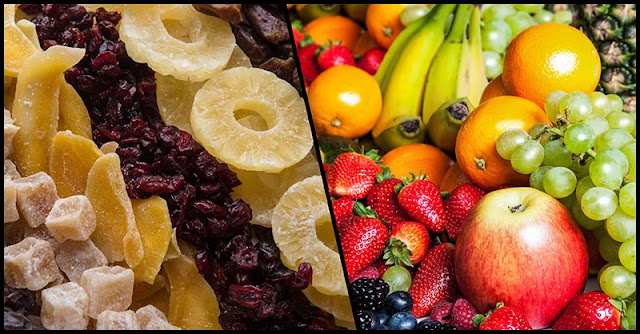Dried and fresh fruits are both healthy foods. Although they vary in size, they still share many similarities. Both of them are high in fiber, packed with vitamins and minerals, and great sources of antioxidants. They make a great snack and share almost the same amount of sugar per serving.
Some of the extremely popular dried fruit products that are rich in antioxidants are raisins, figs, apricots, and dried plums. Despite the fact that dried fruits are similar to their fresh doubles in terms of nutritional values, there are still key differences between the two products:
- Dried fruits have a longer shelf life compared to fresh fruits.
- Dried fruits are made using the dehydrating process, which removes most of its water content. It contains less water as compared to fresh fruits, thus serving size is significantly smaller. A cup of dried fruit is approximately equal to one cup of fresh fruits, according to the New York Times.
- Refined sweeteners such as sucrose or high fructose corn syrup are added by some companies during the dried fruit’s production process. Through this, calorie intake and glycemic index of some dried fruits are increased. For instance, 100 grams of raisins contains 290 calories compared to 69 calories per 100 grams of fresh grapes.
- Due to the dehydration process, dried fruits have a fewer amount of nutrients and vitamins, such as vitamin C, as compared to fresh fruit. The degree of heat that is conducted at the fruit drying process can destroy some of its nutrients and antioxidants.
- Sulfur dioxide, a chemical preservative commonly used in some dried fruit (especially apricots), has been found to destroy Thiamine or vitamin B1 which is found in most fresh fruits. According to the World Health Organization, sulfur can cause life-threatening reactions, including anaphylaxis, a serious allergic reaction that happens very quickly and is potentially lethal.
- Dried fruit usually has a higher fiber content compared to fresh fruit.
- Dried fruit tend to have a higher sugar content compared to fresh fruit.
In a Q & A column in Science Times, it was noted that in a cup of fresh apricots there is 86 percent water, with 74 calories, whereas in a cup of dried fruit is 76 percent water, with 212 calories. Fresh apricots have 3.1 grams of fiber versus 6.5 for dried; 0.6 milligrams of iron versus 2.35 milligrams; 15.5 milligrams of vitamin C versus 0.8 milligrams; and 149 retinol activity equivalents of vitamin A versus 160.
Furthermore, a cup of fresh apples was also found to have 8 milligrams of calcium, 6 milligrams of magnesium and 14 milligrams of phosphorus whereas in 1/4 cup of dried apple there are 3 milligrams of calcium, 3 milligrams of magnesium and 8 milligrams of phosphorus.
Whether it is dried, frozen or fresh, fruits are healthy, nutritious options that should be included in your diet. It will provide your body the important nutrients and minerals that it needs to properly function. Just put in mind that dried fruits, due to its higher sugar and carbohydrate content, should only be consumed as an addition to your fruit consumption and not as a complete replacement. Lastly, when buying or selecting dried fruits, be sure to read the label first, and opt for those that do not contain sulfur.









